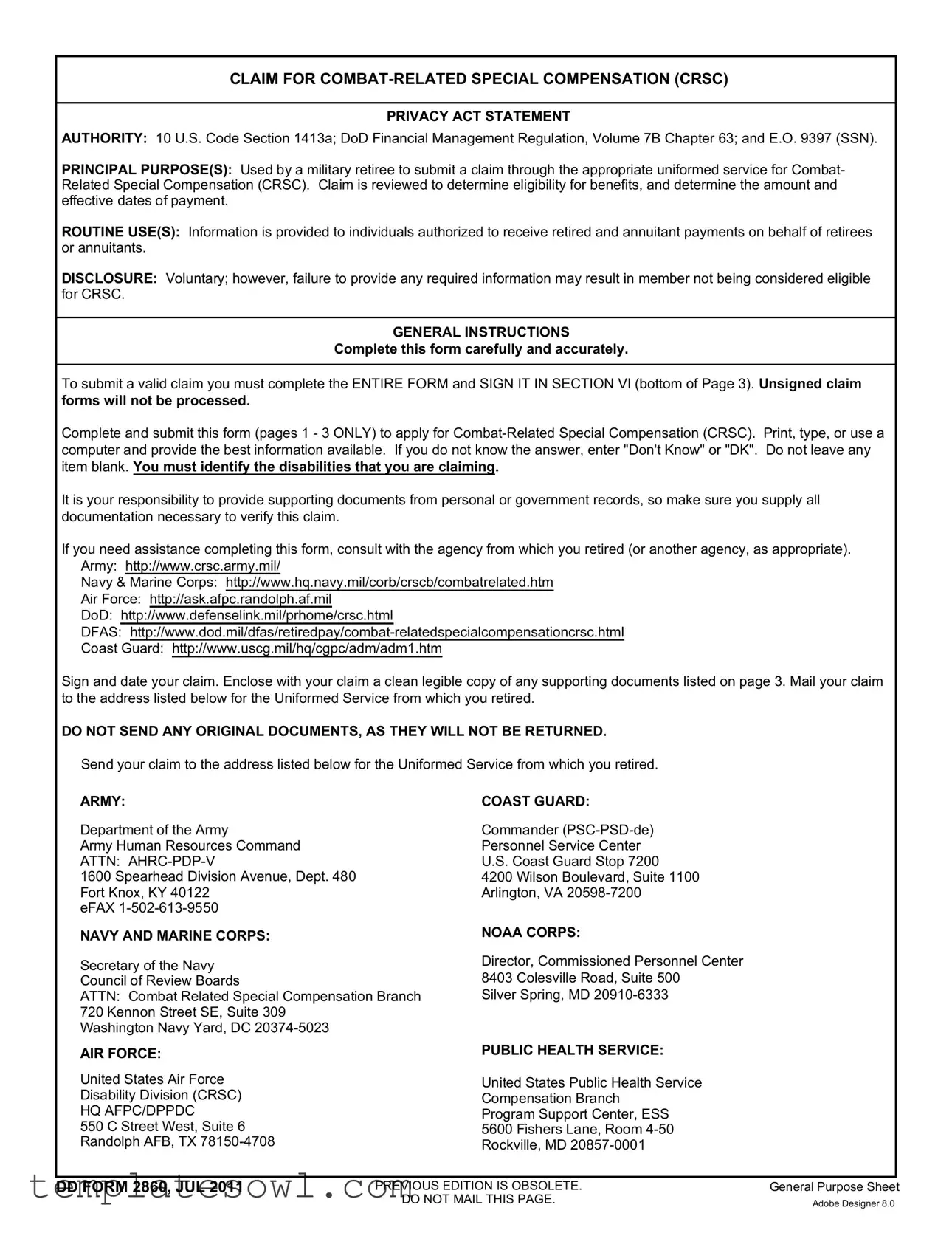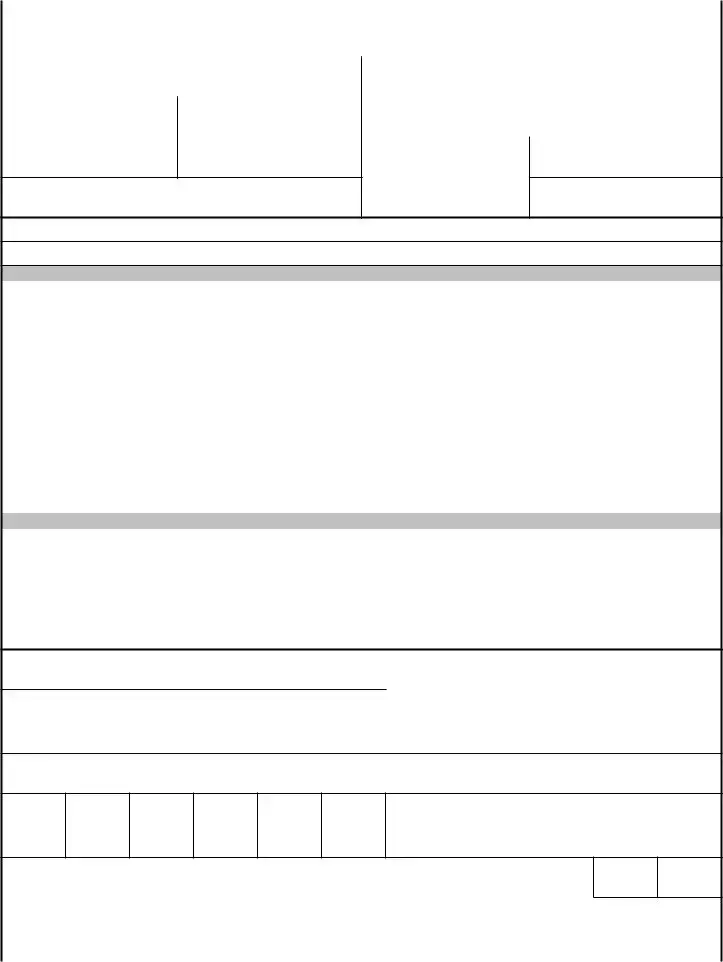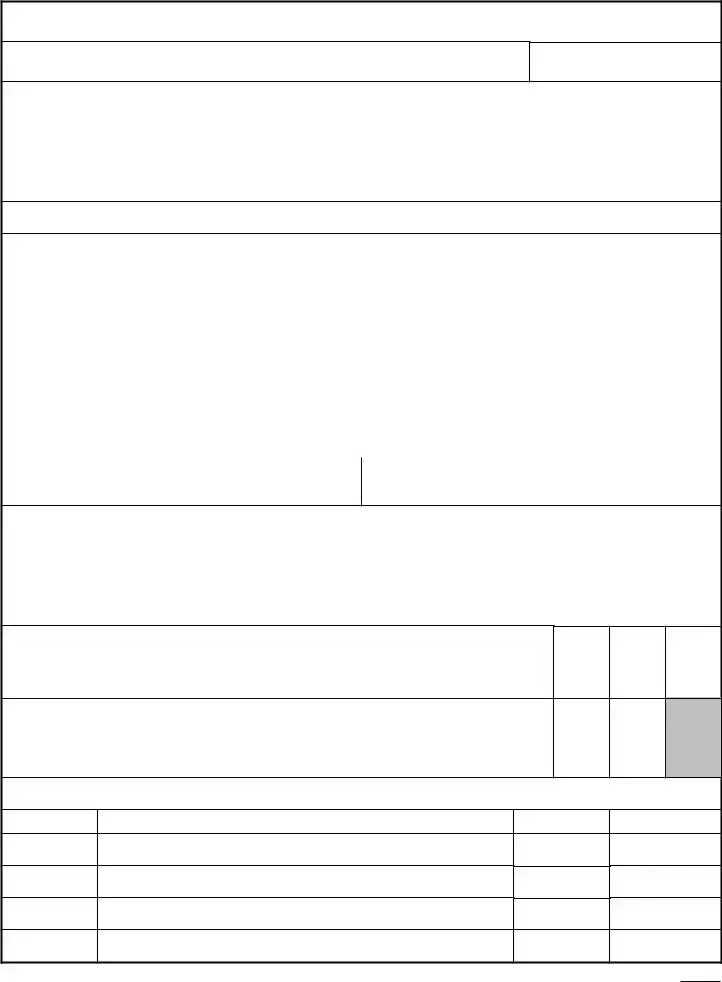APPENDIX A - COMBAT-RELATED CODES
PURPLE HEART (PH) - The disability resulted from an injury for which you were awarded the Purple Heart. Evidence should clearly show that the injury was associated with an incident involving armed conflict, such as shrapnel wounds due to a mortar attack. Documentation must include a copy of the Purple Heart citation and DD Form 214 reflecting the award and injury, or the Purple Heart citation, and excerpts from the Service Medical Record that correspond to the date and document the treatment of the Purple Heart injury.
DIRECT RESULT OF ARMED CONFLICT (AC) - The disability was incurred in the line of duty as a direct result of armed conflict. The fact that a member incurred the disability during a period of war or an area of armed conflict or while participating in combat operations is not sufficient by itself to support a combat-related determination. There must be a definite, documented, causal relationship between the armed conflict and the resulting disability. Armed conflict includes a war, expedition, occupation of an area or territory, battle, skirmish, raid, invasion, rebellion, insurrection, guerrilla action, riot, or any other action in which Service members are engaged with a hostile or belligerent nation, faction, force, or terrorists. Armed conflict may also include such situations as incidents involving a member whileinterned as a prisoner of war or while detained against his or her will in custody of a hostile or belligerent force or while escaping or attempting to escape from such confinement, prisoner of war, or detained status.
IN THE PERFORMANCE OF DUTY UNDER CONDITIONS SIMULATING WAR (SW). - The disability was incurred in the line of duty as a result of simulating armed conflict. The fact that a member incurred the disability during a period of simulating war or in an area of simulated armed conflict or while participating in simulated combat operations is not sufficient by itself to support a combat-related determination. There must be a definite, documented, causal relationship between the simulated armed conflict and the resulting disability. In general, this covers disabilities resulting from simulated combat activity during military training, such as war games, practice alerts, tactical exercises, airborne operations, grenade and live fire weapons practice, bayonet training, hand-to-hand combat training, rappelling, and negotiation of combat confidence and obstacle courses while in full combat gear. Physical training activities such as calisthenics and jogging or formation running and supervised sports activities are not included.
WHILE ENGAGED IN HAZARDOUS SERVICE (HS) - The disability was incurred during performance of duties that present a higher degree of danger to Service personnel due to the level of exposure to actual or simulated armed conflict. The fact that a member incurred the disability during a period of hazardous service is not sufficient by itself to support a combat-related determination. There must be a definite, documented, causal relationship between the hazardous service and the resulting disability. Such service includes, but is not limited to, aerial flight, parachute duty, demolition duty, experimental stress duty, diving duty, and rescue missions.
INSTRUMENTALITY OF WAR (IN) - The disability was incurred in the line of duty as a result of an instrumentality of war. An instrumentality of war is a vehicle, vessel, or device designed primarily for Military Service and intended for use in such Service at the time of the occurrence or injury. Incurrence during an actual period of war is not required; however, there must be a direct, documented, causalrelationship between the instrumentality of war and the resulting disability. The disability must be incurred incident to a hazard or risk of service and be caused by the device itself. Instrumentalities not designed primarily for Military Service if use of, or occurrence involving, such instrumentality subjects the individual to a hazard peculiar to Military Service, are included. Such use or occurrence differs from the use or occurrence under similar circumstances in civilian pursuits. An example of this would be injuries sustained while engaging in pugil stick training using a broomstick, where the broomstick replaces the weapon and causes the injury. A determination that a disability is the result of an instrumentality of war may be made if the disability was incurred in any period of service as a result of such diverse causes as wounds caused by a military weapon, accidents involving a military combat vehicle, injury or sickness caused by fumes, gases, or explosion of military ordnance, vehicles, or material. For example, if a member is on a field exercise and is engaged in sporting activity and falls and strikes an armored vehicle, the injury will not be considered to result from the instrumentality of war (armored vehicle) because it was the sporting activity that was the cause of the injury, not the vehicle. On the other hand, if the individual was engaged in the same sporting activity and the armored vehicle struck the member, the injury would be considered the result of an instrumentality of war.
AGENT ORANGE (AO) - The disability was incurred as a result of Agent Orange exposure (herbicides). For these disabilities to be considered combat related, they must be specifically granted by the Department of Veterans Affairs (VA) as presumptive to Agent Orange exposure (herbicides). For consideration, the initial VA Rating Decision for the claimed disability must show not just Service connection, but the specific causes of the condition; such as, member has Diabetes due to Agent Orange exposure (herbicides). In addition, for secondary conditions to be granted as combat related, they must be specifically granted by the VA as secondary to the Agent Orangecondition; such as, member's Hypertension is secondary to Agent Orange Diabetes. If the conditions were diagnosed after Vietnam serviceand prior to retirement, evidence must show the date of diagnosis and proof of Vietnam service. Proof of Vietnam service can include but is not limited to service medical records, evaluations, decoration citations, travel vouchers or PCS orders.
RADIATION EXPOSURE (RE) - The disability was incurred as a result of combat-related radiation exposure. Combat-related radiation exposure includes documented, onsite participation in a test involving the atmospheric detonation of a nuclear device; the occupation of Hiroshima or Nagasaki, Japan, by the United States forces during the period beginning on August 6, 1945, and ending on July 1, 1946; internment as a prisoner of war in Japan during World War II; or service in Paducah, Kentucky, Portsmouth, Ohio; or the area identified as K25 at Oak Ridge, Tennessee for at least 250 days before February 1, 1992.
GULF WAR (GW), MUSTARD GAS OR LEWISITE (MG) - These codes relate to disabilities awarded by the VA on the basis of presumption relating to service in the Persian Gulf War or exposure to Mustard Gas or Lewisite, even though there is no direct connection and the disability did not occur immediately. For consideration, the initial VA Rating Decision for the claimed disability must show notjust Service connection, but the specific cause of the condition, such as, member has developed Fibromyalgia from service in the Persian Gulf War. Documentation should also describe the place, period, and conditions of exposure. In addition, for secondary conditions to be granted as combat-related, they must be specifically granted by the VA as secondary to the condition developed from service in the Persian Gulf War or exposure to Mustard Gas or Lewisite; such as, member's Scars are secondary to Chronic Obstructive Pulmonary Disorder from exposure to Mustard Gas.





